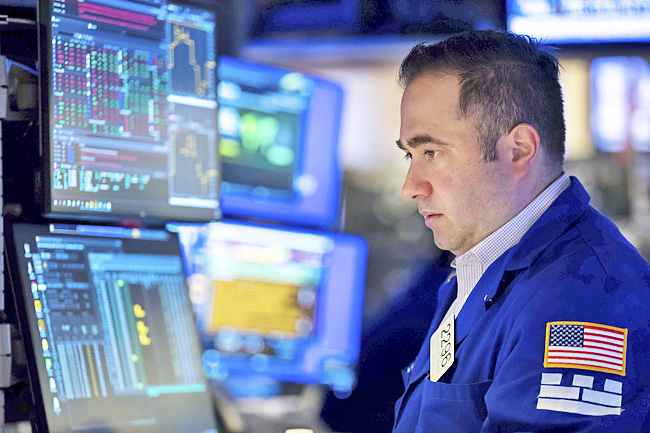NEW YORK (AP) – Stocks tumbled again on Friday, and this time bond yields joined in the swoon as worries about an imminent Russian invasion of Ukraine piled onto Wall Street’s already heavy list of concerns about inflation and interest rates.
The S&P 500 lost 1.9 per cent after the White House encouraged all United States (US) citizens to leave Ukraine within the next 48 hours, before possible military action by Russia.
The price of oil rose more than three per cent.
Stocks took a sudden turn lower in the middle of trading, with losses for the S&P 500 nearly tripling in about half an hour. Similar, knee-jerk swings swept through other markets as investors pulled money out of riskier things like stocks and moved instead toward the safety of bonds and gold.
They’re just the latest sharp veers in what’s already been a tumultuous 2022 for markets.
Wall Street has been shaking as it comes to grips with a Federal Reserve forced to aggressively remove the low interest rates that investors love, in order to beat back high inflation.
The S&P 500 fell 85.44 points to 4,418.64 to lock in its first weekly loss in the last three but its fourth in the last six. The Dow Jones Industrial Average lost 503.53, or 1.4 per cent, to 34,738.06, and the Nasdaq dropped 394.49, or 2.8 per cent, to 13,791.15.

Tensions have been simmering for a while about possible military action by Russia, and US national security adviser Jake Sullivan said on Friday that the US did not have definitive information that Russian President Vladimir Putin had ordered an invasion. But he also said that “the threat is now immediate enough that prudence demands that it is the time to leave now” for Americans in the country. Russia is one of the world’s largest energy producers, and the warnings gave oil prices an immediate jolt.
Brent crude, the international standard, rose 3.3 per cent to settle at USD94.44 barrel amid the possibility that violence could disrupt supplies. US crude rose 3.6 per cent to settle at USD93.10 per barrel.
Prices were already rising before the Ukraine warnings, likely because of a statement from the International Energy Agency that supplies in the oil market are already tight, said energy equity analyst at CFRA Stewart Glickman.
Gold also rose, gaining nearly USD20 in half an hour during the afternoon to top USD1,860 per ounce, as investors searched for safety.
A similar rush for stability also drove investors in Treasury bonds, which in turn lowered their yields. The 10-year Treasury yield sank to 1.91 per cent from roughly 2.03 per cent late on Thursday.
For bond yields, it’s a sharp U-turn after they steadily marched higher on expectations that the Fed will raise rates more often and by a sharper degree this year than expected. Just a day earlier, the 10-year yield topped two per cent for the first time since 2019.
Forecasts for a more aggressive Fed got a huge jolt on Thursday, when a report on inflation came in hotter than expected and showed that it was at a 40-year high. The Fed can slow the economy and inflation by raising interest rates, something it hasn’t done since 2018, but higher rates also put downward pressure on stocks and other investments.
Economists at Goldman Sachs just increased their forecast for rate increases this year by the Fed to seven from five, for example.
Much of the market’s volatility in early 2022 has centred around expectations for what the Fed will do. Besides Thursday’s report on inflation, other flashpoints included the release of the minutes of a Fed policy meeting that said it may reverse its bond-buying programme earlier than expected.
The market also shuddered earlier this month after Facebook’s parent company reported surprisingly weak results for its latest quarter. That threatened the belief that continued profit growth can help stocks power through the downward pressures created by higher rates.
Markets will likely remain volatile as the Fed moves closer to raising rates.






